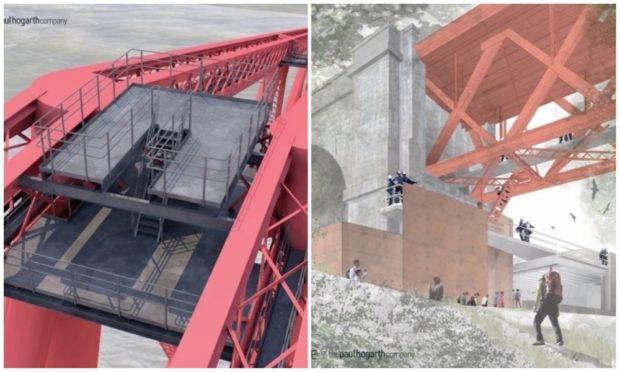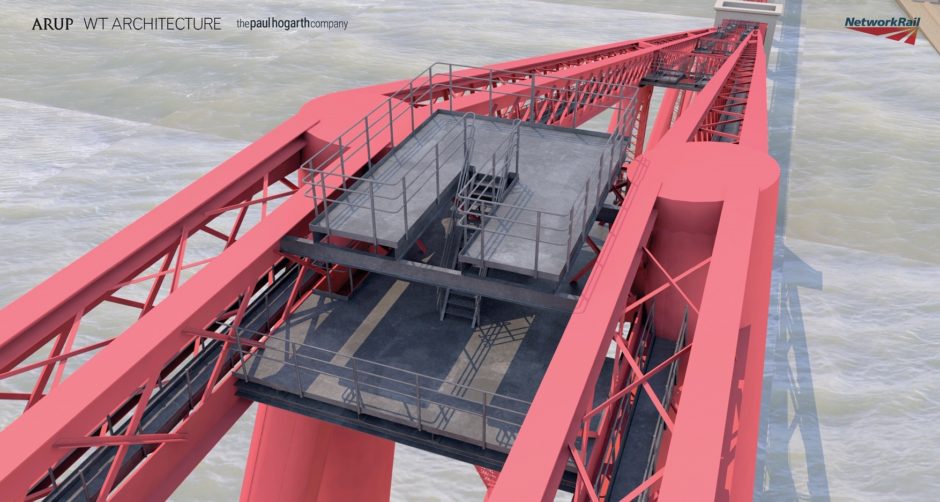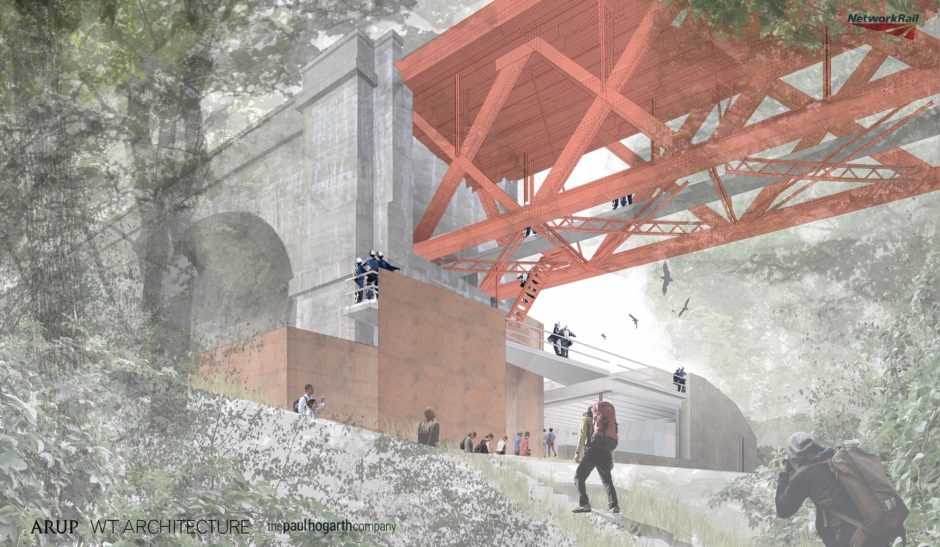Ambitious plans to create a Forth Bridge visitor centre have been given the green light, triggering hopes the development will have a positive knock on effect for tourism in Fife.
Planners have approved a proposal which will allow the public to climb to the top of the world famous 375 ft high structure, learn about its construction and history and take in panoramic views of the Forth from a gallery platform.
A bridge walk and reception hub on the south side of the Unesco World Heritage site at South Queensferry are also included in the planning application lodged by Network Rail and approved by West Lothian Council.
Groups wearing safety harnesses will be led out onto the bridge’s south cantilever and will walk up to a viewing point at the top.
It is estimated the bridge experience could attract around 85,000 visitors, boosting the local economy and creating about 35-40 jobs.
Longer-term plans to create a similar centre at the north end of the bridge are also being explored.
Altany Craik, Fife Council’s economy, tourism, strategic planning and transportation committee convener said: “This is really good news for the Forth Bridges Area as a whole. The Forth Bridges Area Tourism Group is working to deliver the Forth Bridges Area Tourism Strategy and as a key element of the strategy we are delighted to see that this will be going ahead.
“This will provide a huge boost to tourism in the area which will bring economic benefit to both sides of the Forth as visitors come to experience the World Heritage Site and we look forward to seeing the new Bridge Walk experience being delivered.”
Commenting on the approval, Alan Ross, Network Rail Scotland’s director of engineering and asset management, said: “We are pleased to have secured planning consent for the project.
“The bridge walk experience will offer the public a unique and memorable visit to one of Scotland’s most loved structures and bring extra tourists to the town.
“We are fully committed to working with the people of Queensferry to deliver our plans sensitively and with as little disruption as possible.”


